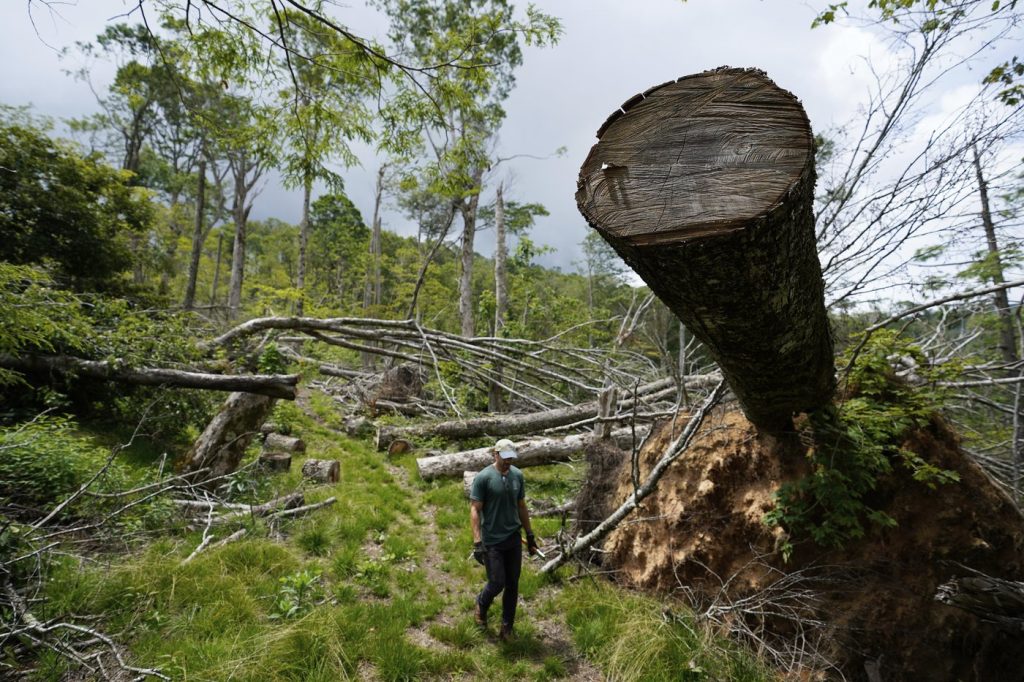In Unicoi County, Tennessee, a group of volunteers and staff from the Appalachian Trail Conservancy and local organizations are engaged in the restoration of the Appalachian Trail, which has faced significant damage due to Hurricane Helene nearly a year earlier. One of the key tasks at hand involves addressing the holes left by downed trees, including a massive tree whose root ball is comparable in size to a kiddie pool. The volunteers are not moving the tree; instead, they are focused on making the trail safer and more resilient for hikers.
Hurricane Helene caused extensive disruptions last September, resulting in the deaths of over 200 individuals and the destruction of entire towns. The damage was so severe that more than 430 miles of the trail were initially closed, but this has since been reduced to only 5 miles of closed sections. The majority of this restoration work is being carried out by a dedicated network of volunteers, highlighted by Jake Stowe, a program support specialist with the Appalachian Trail Conservancy, who emphasized that volunteers are essential for the trail's upkeep.
The Appalachian Trail spans over 2,000 miles from Georgia to Maine, attracting more than 3 million visitors annually. Many hikers undertake lengthy treks to experience the trail's scenic beauty, while others visit sporadically. However, the aftermath of Hurricane Helene has had a detrimental impact on local tourism, as fewer hikers have ventured out. Ongoing repairs and maintenance are crucial not only for trail integrity but also for local economies that depend on hiking-related tourism.
As the volunteers work to restore the trail, they face significant challenges, including the labor-intensive task of dealing with root balls left by fallen trees. Cutting and disposing of the downed trees was just the first step; filling the resulting holes is a painstaking process that can take a week or more using only hand tools. The Appalachian Trail runs through rugged terrain, necessitating the use of tools such as shovels, rakes, and pruners, rather than heavy machinery.
In addition to clearing debris, the restoration effort requires implementing sustainable improvements, such as building steps or water bars to direct rainfall off the trail. Although the restoration work takes time, it is important to enhance the hiking experience and ensure that the trail remains navigable.
Collaboration with federal agencies, such as the U.S. Forest Service and the National Park Service, plays a vital role in these restoration efforts. These agencies provide funding, equipment, and assistance in transporting materials. The importance of continued support from the federal government is essential for sustaining volunteer efforts, as the volunteers contribute significantly to the trail's maintenance.
Volunteerism peaked following Hurricane Helene, with many individuals eager to help. However, the enthusiasm appears to have waned this year, despite ongoing efforts from various groups. Interestingly, some volunteers have traveled from far-off places, including Japan. Their motivation to volunteer at the Appalachian Trail stems from their own experiences with natural disasters, such as the 2011 earthquake and tsunami in Japan, where global support played a pivotal role in the recovery process.
Among the volunteers, Kumi Aizawa and her companions aimed to apply learned best practices from their work on long-distance trails back in Japan to the Appalachian Trail. Their involvement exemplifies a spirit of international camaraderie and mutual support in the face of natural calamities. As the restoration activities continue, the volunteers' unified efforts reflect a commitment to preserving the beloved Appalachian Trail for current and future generations.










